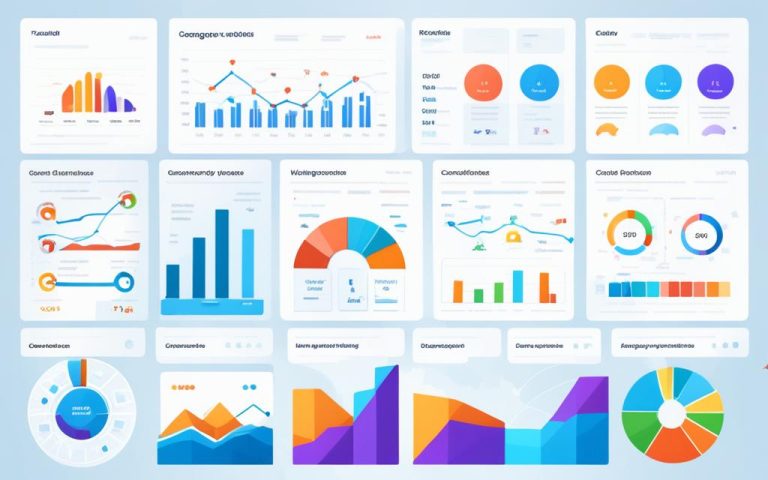Understanding Permalinks in Digital Content
When it comes to optimizing your website for search engines, there are several factors to consider. One crucial element that often gets overlooked is the permalink. A permalink is the permanent link that leads to a specific page on your website. It plays a vital role in improving your website’s ranking in search engine results and ensuring the stability of your digital content.
So, what exactly is a permalink? It consists of the domain, subdomain (if applicable), path, and slug. The slug is an essential part of the permalink as it tells search engines how to index the page. By customizing your permalinks with relevant keywords, you can enhance your website’s SEO and make it easier for readers to find and share your content.
The Importance of Permalink Structures
Choosing the right permalink structure plays a crucial role in optimizing SEO for websites that contain digital content. Different types of websites require different permalink structures to effectively communicate information and enhance user experience. Let’s explore the significance of permalink structures and how they contribute to the overall success of a website.
News Websites
For news sites, incorporating the date and title in the slug is highly recommended. This practice enables readers to quickly determine the publication date of an article, ensuring they are accessing the most current information. By including the date in the permalink structure, news websites demonstrate transparency and credibility to their audience.
Evergreen Content Blogs
On the other hand, for blogs that focus on evergreen content, a simpler permalink structure that solely includes the article title is more appropriate. By eliminating the inclusion of dates, these blogs maintain a timeless quality to their content. This structure allows for greater flexibility in promoting and sharing articles over an extended period, as the information remains relevant regardless of when it was published.
When deciding on a permalink structure, it is crucial to consider the specific needs of the website’s content and target audience. By tailoring the permalink structure to these requirements, websites can enhance the discoverability and accessibility of their digital content.
Customizing Permalink Structures with CMS
Content management systems (CMS), such as WordPress, offer options to customize the permalink structure according to the website’s needs. These systems provide a user-friendly interface that enables website owners to easily modify their site’s permalink settings. By taking advantage of this feature, website administrators can create a permalink structure that aligns perfectly with their content goals and SEO strategies.
Benefits of an Optimized Permalink Structure
Optimizing the permalink structure of a website yields several benefits. First and foremost, it improves SEO by incorporating relevant keywords into the URL. The inclusion of keywords in the permalink makes it easier for search engines to understand the content of the page, thereby improving the website’s ranking in search results.
Additionally, an optimized permalink structure enhances the user experience. A well-structured and descriptive URL provides users with a clear understanding of the content they can expect to find on a page. This transparency fosters trust and encourages users to click on the link, resulting in increased traffic and engagement.
Ultimately, selecting and optimizing the permalink structure is a critical aspect of website development that significantly impacts SEO and the overall success of a website. By considering the nature of the content and the preferences of the target audience, website owners can create permalink structures that effectively convey information, encourage engagement, and improve search engine rankings.
Creating and Optimizing Permalinks
Creating a permalink is a simple process that involves choosing a domain, slug, and path if applicable. When it comes to optimizing permalinks, there are a few best practices to consider:
- Keep permalinks short and concise
- Include main keywords in the permalink
- Separate words with dashes
Optimizing permalinks is important because they play a significant role in search engine optimization (SEO). Search engines and readers rely on permalinks to understand the content of a page and determine its relevance. By including main keywords in the permalink, you can improve the visibility of your content to both search engines and users.
For example, if you are writing a blog post about “Best SEO Practices,” a suitable permalink would be something like example.com/best-seo-practices. This permalink clearly communicates the topic of the post and improves SEO.
Content management systems (CMS) like WordPress provide easy ways to set up and change permalinks. In WordPress, you can customize the permalink structure to fit your website’s needs. It is important to choose a permalink structure that aligns with your content and target audience.
Properly Redirecting Permalinks
As your website evolves, you may need to change permalinks to improve SEO or update content. However, changing permalinks without setting up proper redirects can lead to broken links and negatively impact SEO rankings. When changing permalinks, it is essential to set up 301 redirects, which inform search engines that the content has moved to a new URL.
By setting up proper redirects, you can maintain the SEO value of the old permalink and ensure a smooth user experience for visitors to your website. Most CMS platforms, including WordPress, offer plugins or built-in features to help you manage redirects when changing permalinks.
Overall, creating and optimizing permalinks is a crucial aspect of SEO optimization. By following best practices and utilizing the features of your CMS, you can improve the visibility of your content and enhance the user experience.
Conclusion
Permalinks are a crucial element in achieving digital content stability and SEO optimization. These permanent links lead users directly to specific pages on a website, improving search engine rankings and enhancing user experience.
Customizing permalinks with relevant keywords and creating a user-friendly structure is essential. By incorporating keywords into the slug and separating words with dashes, websites can optimize their SEO efforts and help search engines and readers decipher the content of each page.
It is vital to establish and optimize permalinks early in the web development process. This allows websites to maximize the benefits of this SEO strategy and ensure a seamless user experience. When choosing a permalink structure, consider the specific needs of your website and target audience to ensure the best possible outcome.
FAQ
What are permalinks?
Permalinks are the permanent links that lead to specific pages on a website.
How do permalinks affect SEO?
Customizing permalinks with relevant keywords can improve search engine optimization (SEO) and make it easier for readers to find and share content.
What is the importance of choosing the right permalink structure?
Choosing the right permalink structure is important for different types of websites as it can help readers understand when an article was published and improve SEO for evergreen content.
How can I create and optimize permalinks?
Creating and optimizing permalinks involves choosing a domain, slug, and path if applicable. Best practices include keeping them short, including main keywords, and separating words with dashes.













